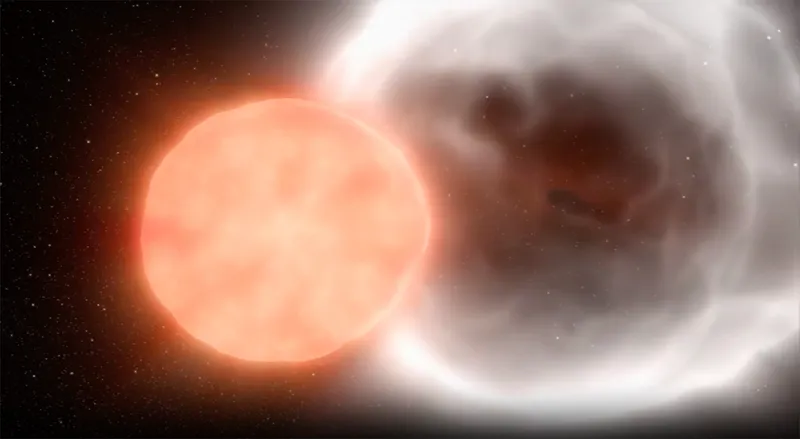The James Webb Space Telescope has enabled astronomers to see distant exploding stars from a time when our Universe was in its infancy.
These events, known as supernovae, are stellar explosions that occur when massive stars reach the end of their lives.
A team of astronomers using the James Webb Space Telescope found 10 times more supernovae in the early Universe than were previously known.

And a few of the supernovae are a type known as standard candles, which enable astronomers to measure vast distances across the cosmos.
"Webb is a supernova discovery machine," says Christa DeCoursey, a third-year graduate student at the Steward Observatory and the University of Arizona in Tucson.
"The sheer number of detections plus the great distances to these supernovae are the two most exciting outcomes from our survey."

How young are the supernovae?
The astronomers studied data that was collected as part of the JWST Advanced Deep Extragalactic Survey (JADES) program, which has already discovered the most distant galaxy ever seen, named JADES-GS-z14-0.
Light from these distant objects is stretched - or 'redshifted' into longer wave lengths by the expansion of the Universe, which makes the Webb Telescope the ideal instrument for observing them.
Before Webb began scouring the sky, only a few supernova had been found above a redshift of 2, which means they existed when the Universe was just 3.3 billion years old (25% of its current age).
This new JADES sample contains many supernovae that exploded when the Universe was less than 2 billion years old.

Discovering the supernovae
The team used multiple images taken up to one year apart and compared them to locate sources that disappeared or appeared in those images.
Supernovae are a type of 'transient' object, which means they vary in brightness over time.
The JADES Transient Survey Sample team uncovered about 80 supernovae in a patch of sky about the thickness of a grain of rice held at arm’s length.
"This is really our first sample of what the high-redshift universe looks like for transient science," said teammate Justin Pierel, a NASA Einstein Fellow at the Space Telescope Science Institute (STScI) in Baltimore, Maryland.
"We are trying to identify whether distant supernovae are fundamentally different from or very much like what we see in the nearby Universe."
The team identified high-redshift supernovae, including the farthest ever spectroscopically confirmed, at a redshift of 3.6.
This means the star exploded when the Universe was just 1.8 billion years old.

Type Ia supernovae
Type Ia supernovae are a type of supernova that always burn with the same brightness.
This means astronomers can observe their apparent brightness, compare them with their actual brightness and calculate their distance.
These are known as 'standard candles' and they enable astronomers to measure distances across the Universe.
They can also be used to measure the expansion rate of the Universe.
The astronomers found at least one Type Ia supernova at a redshift of 2.9, meaning it exploded when the Universe was 2.3 billion years old.

The previous record for a spectroscopically confirmed Type Ia supernova was a redshift of 1.95, when the universe was 3.4 billion years old.
"We’re essentially opening a new window on the transient universe," says STScI Fellow Matthew Siebert, who is leading the spectroscopic analysis of the JADES supernovae.
"Historically, whenever we've done that, we've found extremely exciting things — things that we didn't expect."
"Because Webb is so sensitive, it's finding supernovae and other transients almost everywhere it’s pointed," says JADES team member Eiichi Egami, a research professor at the University of Arizona in Tucson.
"This is the first significant step toward more extensive surveys of supernovae with Webb."
These findings were announced by DeCoursey during a press conference at the 244th meeting of the American Astronomical Society in Madison, Wisconsin, USA.

